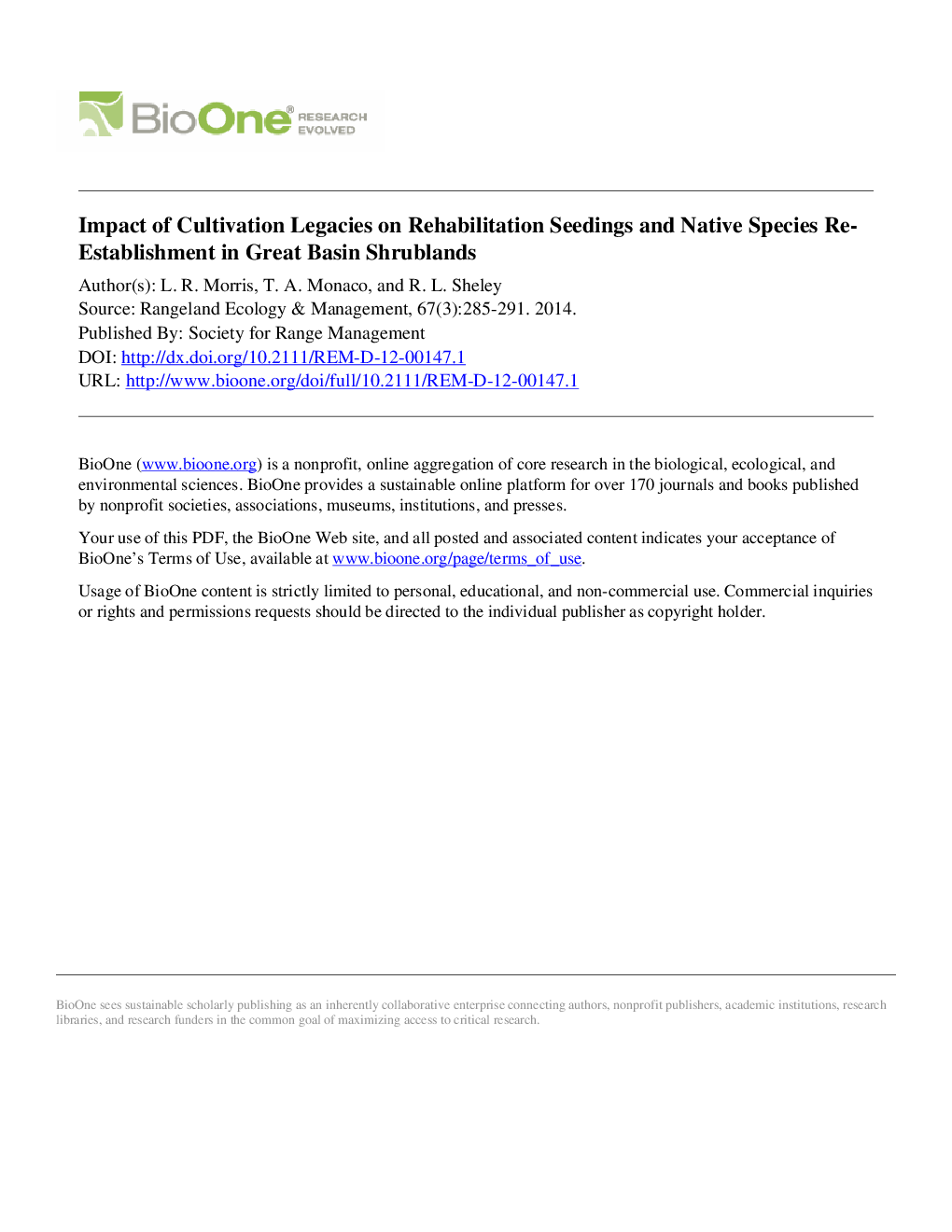| کد مقاله | کد نشریه | سال انتشار | مقاله انگلیسی | نسخه تمام متن |
|---|---|---|---|---|
| 4404341 | 1307157 | 2014 | 8 صفحه PDF | دانلود رایگان |
عنوان انگلیسی مقاله ISI
Impact of Cultivation Legacies on Rehabilitation Seedings and Native Species Re-Establishment in Great Basin Shrublands
ترجمه فارسی عنوان
تأثیر بذرهای کشت بر روی گیاهان توانبخشی و بازسازی گونه های بومی در حوضچه های بزرگ حوضه آبخیز
دانلود مقاله + سفارش ترجمه
دانلود مقاله ISI انگلیسی
رایگان برای ایرانیان
کلمات کلیدی
موضوعات مرتبط
علوم زیستی و بیوفناوری
علوم کشاورزی و بیولوژیک
علوم کشاورزی و بیولوژیک (عمومی)
چکیده انگلیسی
Little is known about how cultivation legacies affect the outcome of rehabilitation seedings in the Great Basin, even though both frequently co-occur on the same lands. Similarly, there is little known about how these legacies affect native species re-establishment into these seedings. We examined these legacy effects by comparing areas historically cultivated and seeded to adjacent areas that were seeded but never cultivated, for density of seeded crested wheatgrass (Agropyron cristatum [L.] Gaertn.) and native perennial grasses, vegetation cover, and ground cover. At half of the sites, historically cultivated areas had lower crested wheatgrass density (P < 0.05), and only one site had a higher density of crested wheatgrass (P < 0.05). Likewise, the native shrub Wyoming big sagebrush (Artemisia tridentata Nutt. subsp. wyomingensis Beetle & Young) had lower cover (P < 0.05) in historically cultivated areas at half the sites. Sandberg bluegrass (Poa secunda J. Presl.) density was consistently lower in historically cultivated areas relative to those seeded-only. At sites where black greasewood (Sarcobatus vermiculatus [Hook.] Torr.) and bottlebrush squirreltail (Elymus elymoides [Raf.] Swezey) were encountered, there was either no difference or a higher density and cover within historically cultivated areas (P < 0.05). Likewise, cover of exotic forbs, especially halogeton (Halogeton glomeratus [M. Bieb.] C. A. Mey.), was either not different or higher in historically cultivated areas (P < 0.05). Bare ground was greater in historically cultivated areas at three sites (P < 0.05). These results suggest that cultivation legacies can affect seeding success and re-establishment of native vegetation, and therefore should not be overlooked when selecting research sites or planning land treatments that include seeding and or management to achieve greater native species diversity.
ناشر
Database: Elsevier - ScienceDirect (ساینس دایرکت)
Journal: Rangeland Ecology & Management - Volume 67, Issue 3, May 2014, Pages 285-291
Journal: Rangeland Ecology & Management - Volume 67, Issue 3, May 2014, Pages 285-291
نویسندگان
L.R. Morris, T.A. Monaco, R.L. Sheley,
